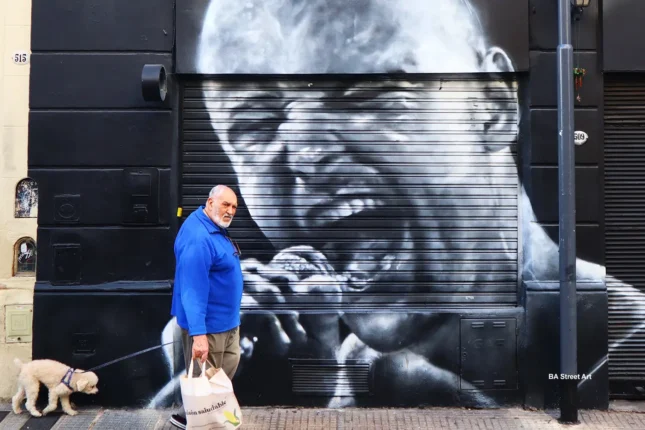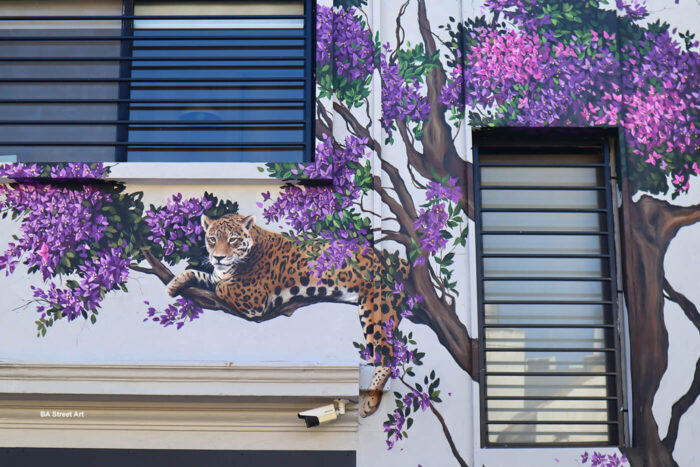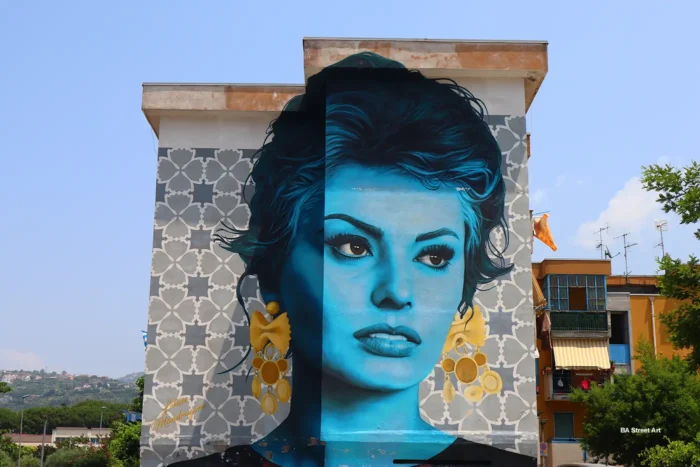Luca Prodan is one of Argentina’s most loved musicians. Murals and stencils can be found all over Buenos Aires featuring the legendary leader of 80s band Sumo who would have celebrated his 72nd birthday today . Photos by Buenos Aires Street Art.
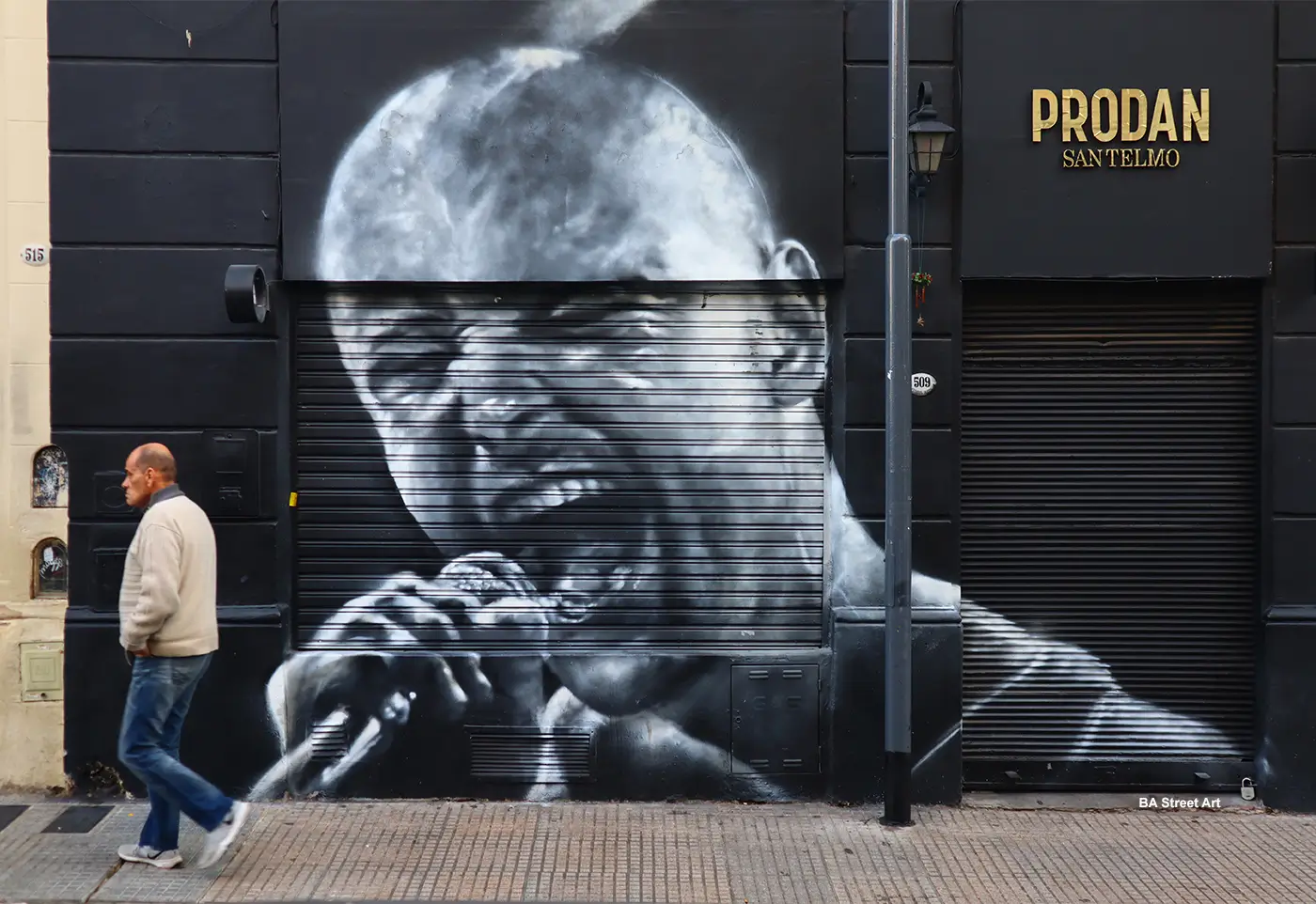
Mural of Luca Prodan by Causi Art in San Telmo (photo © BA Street Art)
Born on may 17th 1953 in Rome to a Scottish mother and an Italian father, Luca Prodan would later become famous as the lead singer of Argentine alternative rock band Sumo. Luca’s parents sent him to the exclusive boarding school in Edinburgh named Gordonstoun. While at the college, Luca became friends with Timmy McKern who was the son of Scottish parents living in Argentina. Luca learned to play guitar and became heavily influenced by punk and psychedelic rock music – bands like Joy Division, The Sex Pistols, Bauhaus and musicians like Ian Dury and Lou Reed. Luca abandoned his studies aged 17 and returned to Italy before later living in Brighton, Manchester and then London where he shared a flat with his school friend. McKern was studying photography and Luca was working in a Virgin Records store in Marble Arch, and they both shared a passion for going to gigs and listening to music.
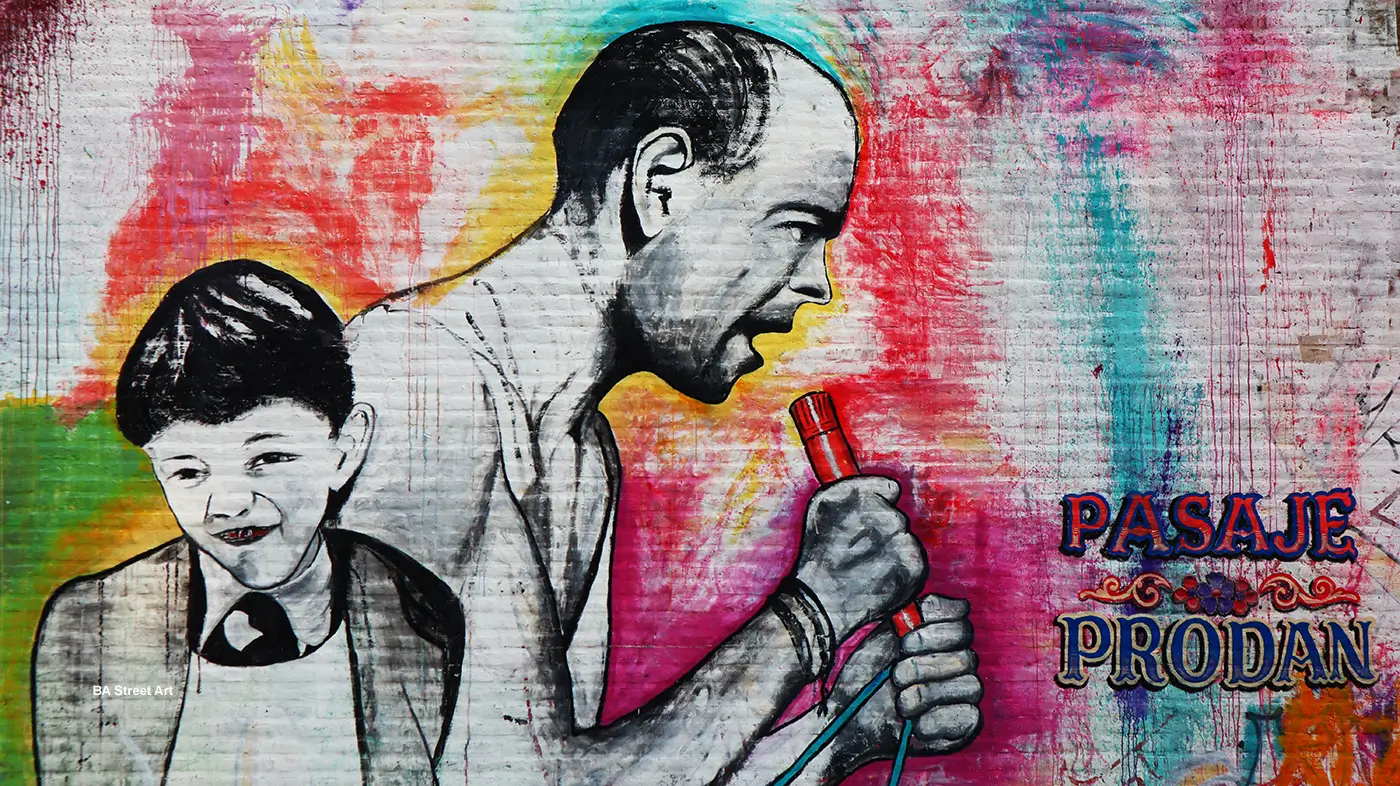
Mural of Prodan as a boy & singing in Hurlingham painted by Hernán Soto & Pablo Falbi (photo © BA Street Art)
In 1979, Luca’s sister Claudia Prodan, while suffering from a heroin addiction, took her own life by locking herself in a car with her boyfriend and inhaling carbon monoxide through the exhaust pipe. Prodan was dealing with drug problems himself and the death of his sister made him hit rock bottom.
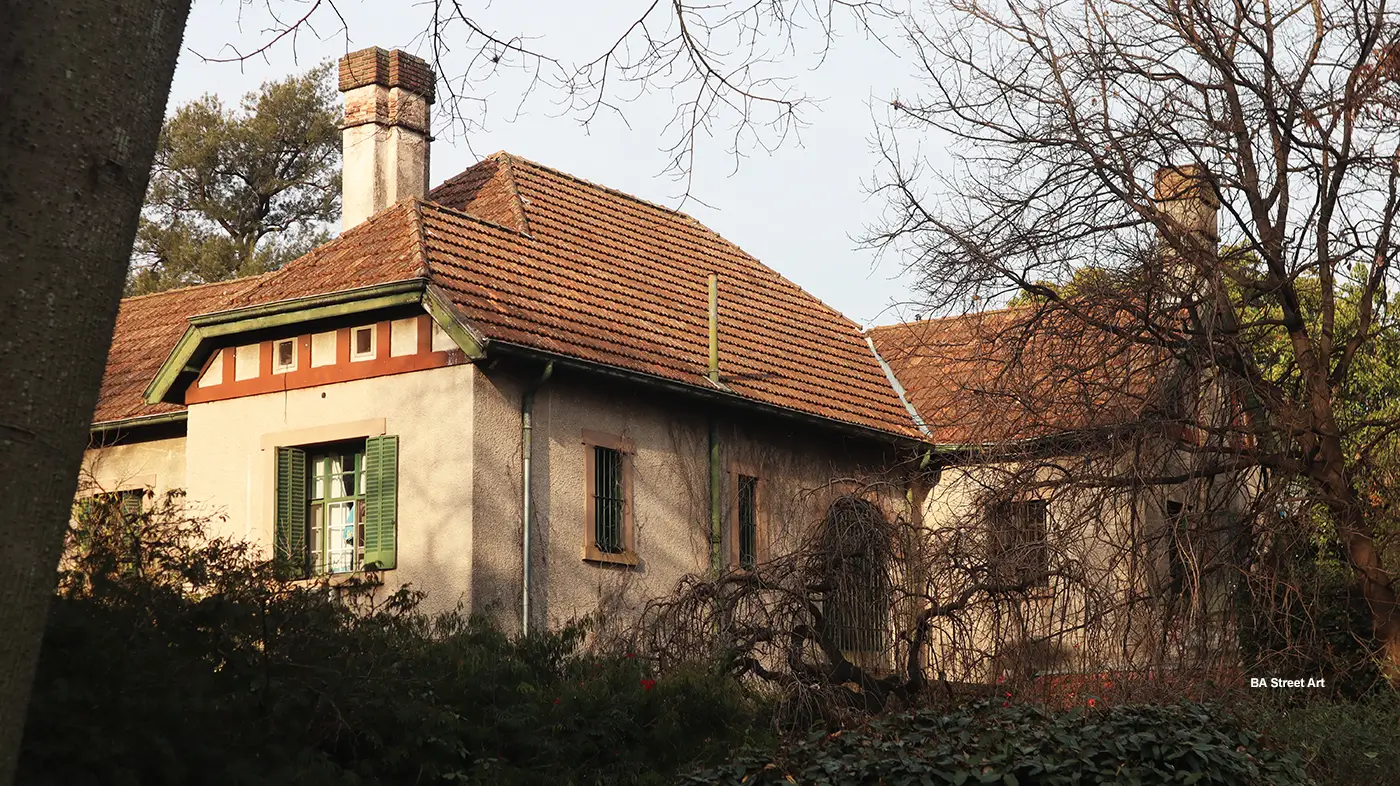
House of Timmy McKern in Hurlingham where Luca lived (photo © BA Street Art)
Following the death of his father, McKern had returned to Argentina and sent a letter to Prodan along with a photo of him with his wife and baby in the Córdoba mountains. At the time, Prodan had just come out of a coma in a London hospital caused by his heroin addiction, and figured a trip to Argentina would be a good idea. In 1980, Prodan bought a flight to Buenos Aires and stayed in the town of Hurlingham with the McKern family who were living at 1020 Canning Street.

Luca lived at 1020 Canning St in Hurlingham (photo © BA Street Art)
Prodan then travelled to Córdoba with McKern and also met guitarist Ricardo Curtet. Motivated to form a band, Prodan then returned to London briefly to buy instruments and find his friend Stephanie Nuttal, asking her to be the drummer. Prodan then met Germán Daffunchio, Timmy’s brother-in-law who became Sumo’s manager; as well as Alejandro Sokol, Germán’s friend. Thus, Sumo’s original lineup was complete: Sokol on bass, Daffunchio and Curtet on guitar, Nuttal on drums, and Prodan on vocals. With her father worried about problems for her daughter during the Falklands / Malvinas War in 1982, Nuttal then returned to the U.K. and Sokol took her place on drums.
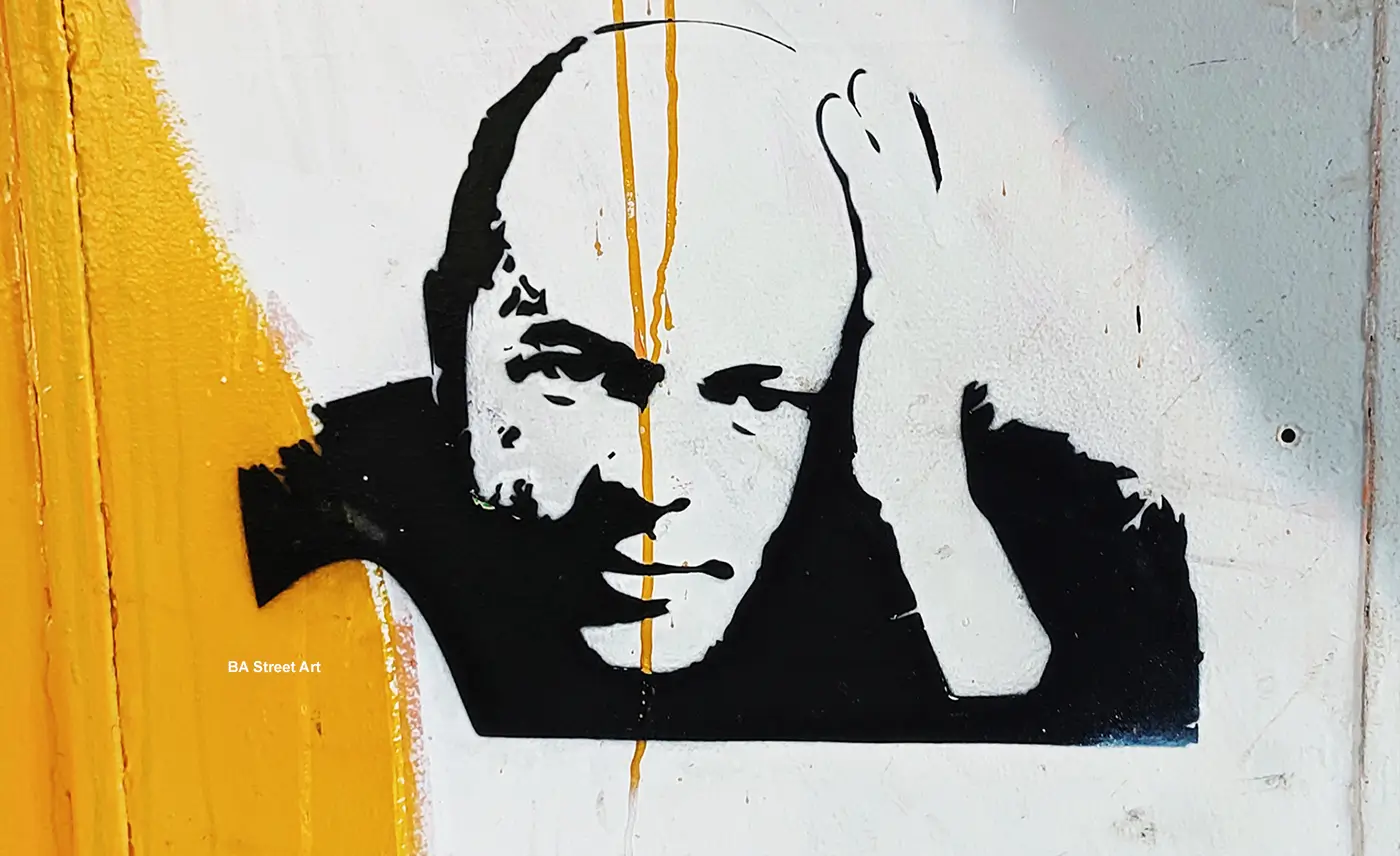
Stencil of Prodan in Palermo, Buenos Aires (photo © BA Street Art)
Sumo established itself in Hurlingham and the band’s first concert was set at a nightclub called Caroline’s Pub, with a show based on songs sung in English. In 1983, a music journalist Roberto Pettinato would join the band bringing a unique style of music that would define Sumo in later songs, mixing rock and his saxophone skills. The same year Sumo released their first album, Corpiños en la Madrugada, in the form of a cassette and with limited distribution. Two years later, Sumo released their first official album, Divididos por la Felicidad (a translation of British band Joy Division) in which the songs captured a lot of reggae influences from Bob Marley and also from funk and post-punk.
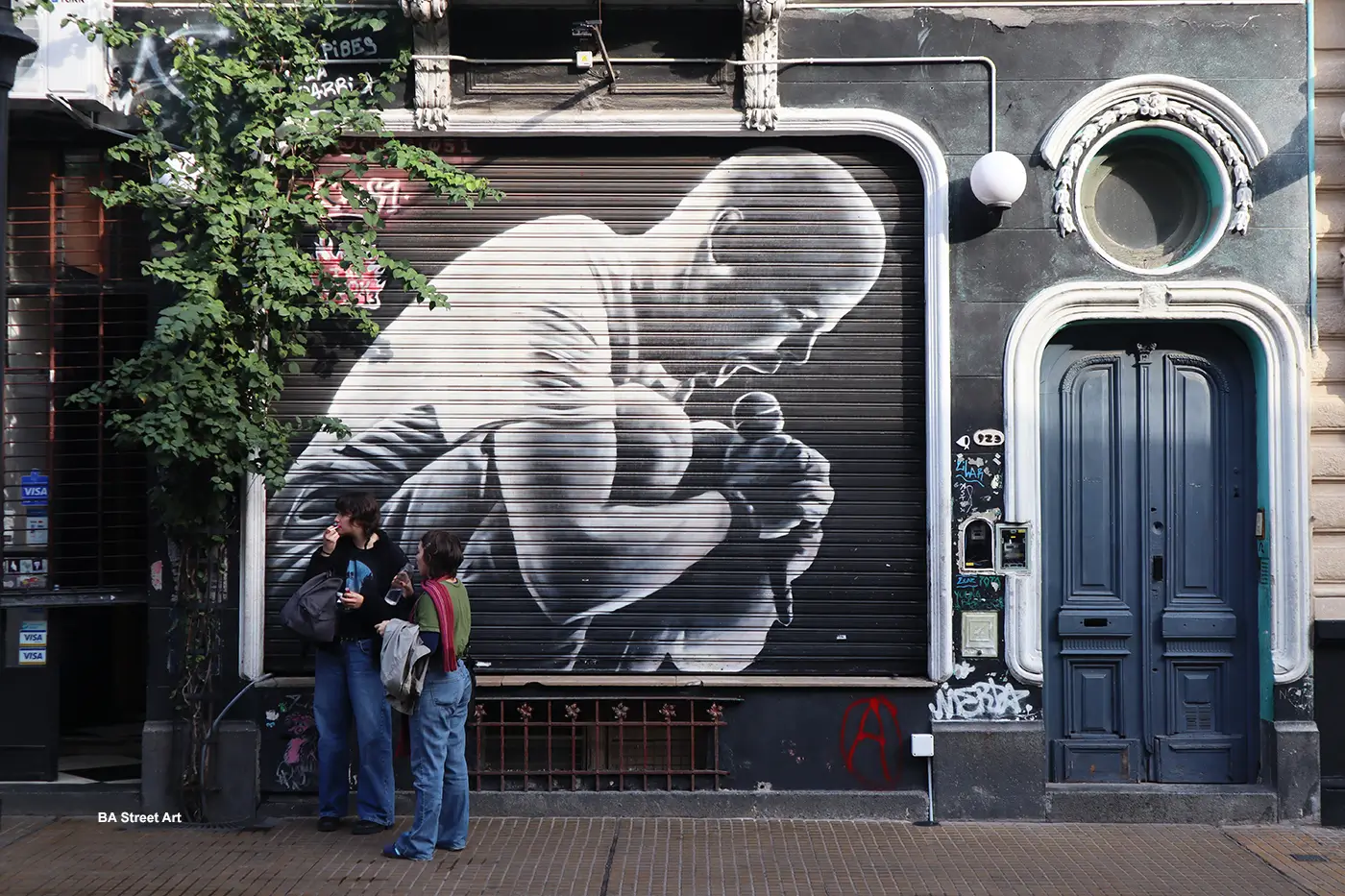
Mural by Causi Art in San Telmo on Bolivar St. (photo © BA Street Art)
‘Divididos por la felicidad’ featured many of the band’s hits: ‘La rubia tarada’, ‘Debede’ and Mejor no hablar’ among others tracks The album was presented on two dates in May 1985, at the Astros Theatre, in front of more than 1,000 people per show, and the album sold more than 15,000 copies at the time.
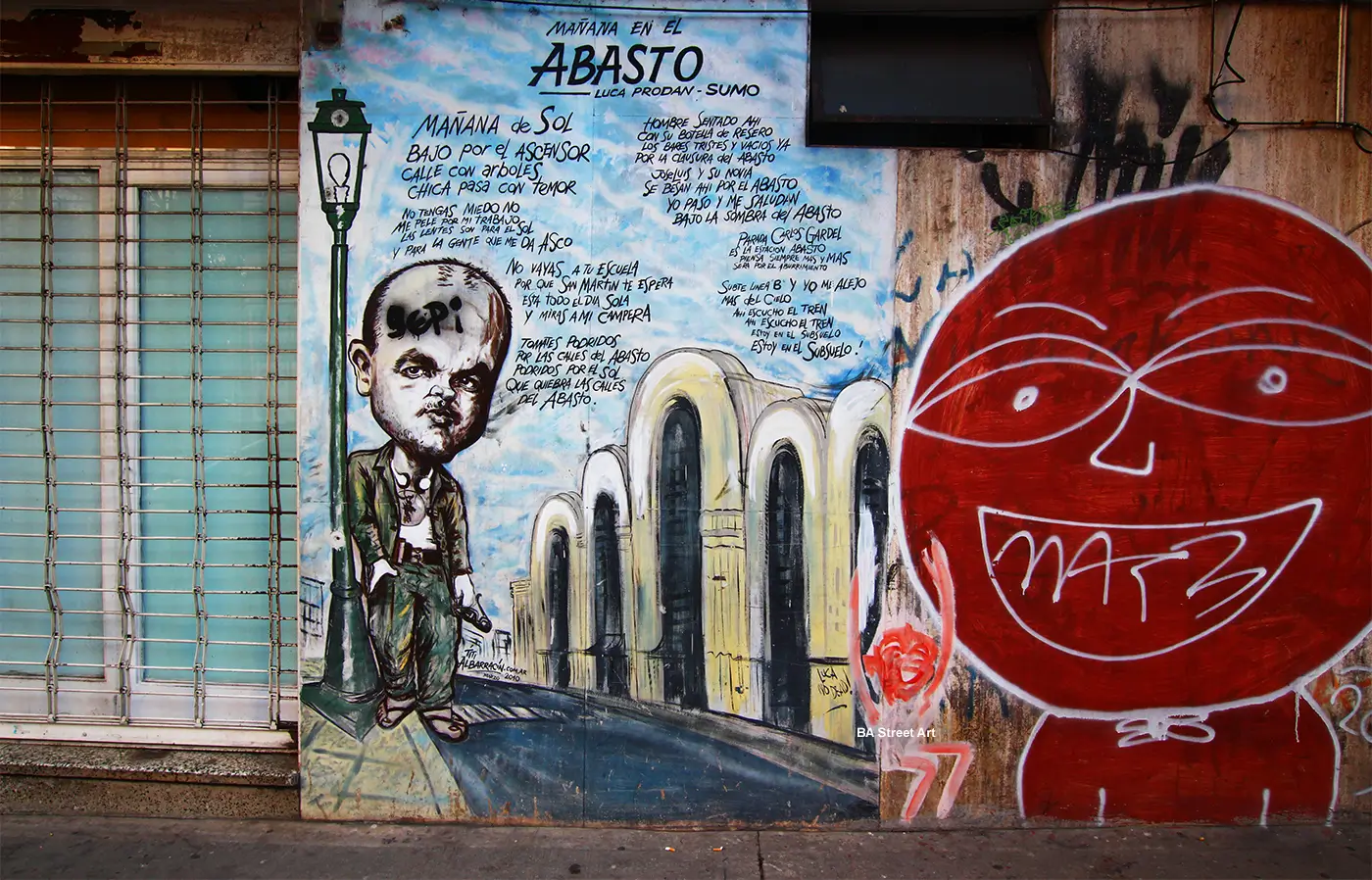
Mural by Titi Albarracin of Prodan in Abasto (photo © BA Street Art)
Prodan also lived in the neighbourhood of Abasto and a mural of him can be found on the corner of Humahuaca and Gallo Streets featuring the iconic art deco shopping mall that was once a fruit and vegetable market. The band’s last performance was in 1987 at Los Andes’ Stadium, together with the group Los Violadores where Prodan said: “Here’s the last one” before closing with the song ‘Fuck You’.

House where Prodan died in Alsina St. with tributes to the singer (photo © BA Street Art)
Dogged with alcohol problems reportedly drinking a bottle of gin a day while return to drug use, on Tuesday, December 22, 1987, aged 34, Prodan was found dead by his then-girlfriend, Silvia Ceriani in thr bedroom of the house where he lived for four months located on Alsina St. in the Monserrat neighborhood of Buenos Aires. His cause of death is still unknown. Some say he suffered a heart attack due to internal bleeding caused by cirrhosis while others who knew him suggested it was a drug overdose.
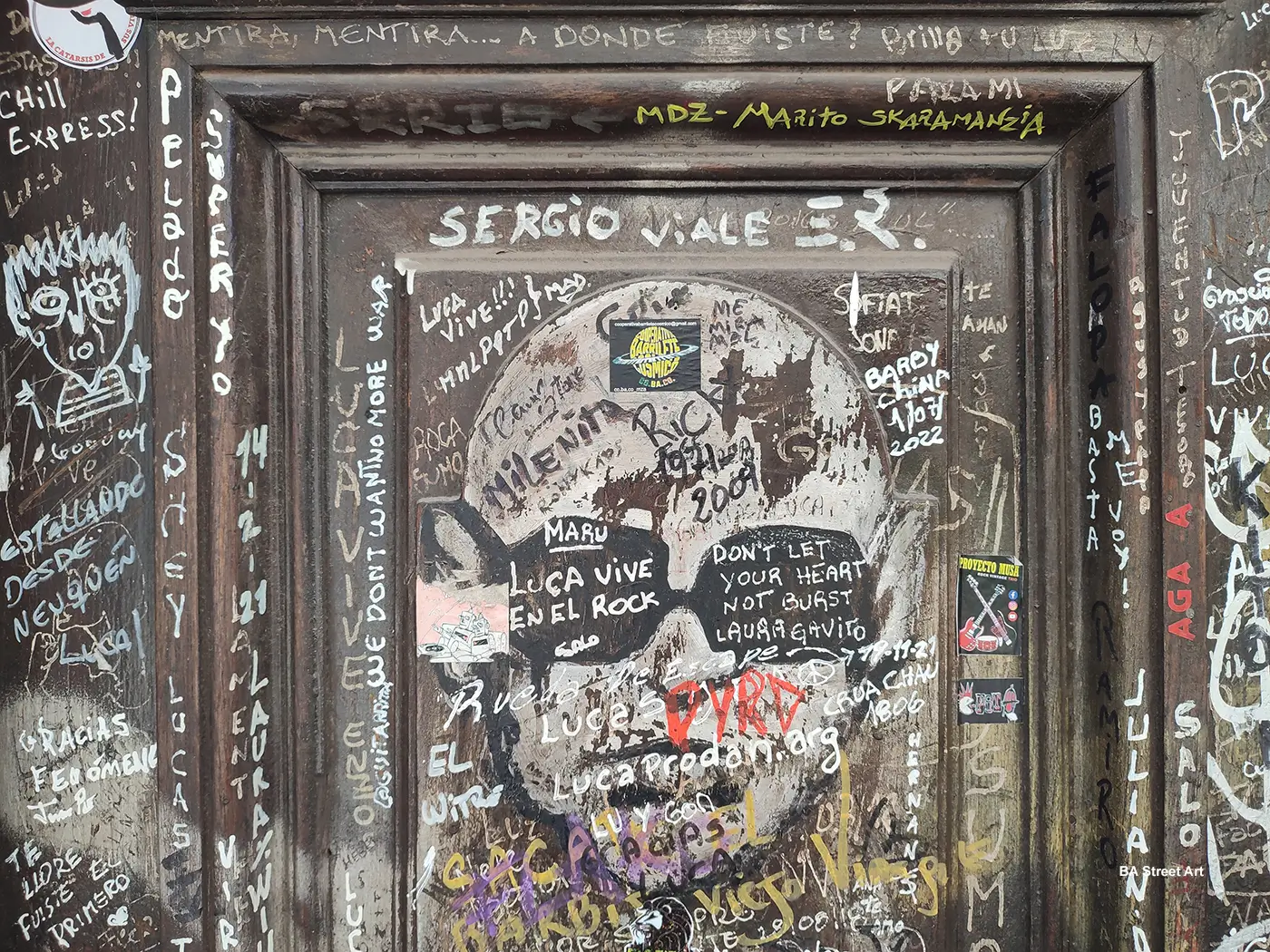
Portrait of Prodan with sunglasses painted on a door of a house where he lived (photo © BA Street Art)
At 451 Alsina Street are a pair of dark brown wooden doors. Fans of all ages come to write messages and tributes to Prodan. The room on the first floor where Prodan died is out of bounds to the public but the house itself has undergone several renovations as part of a city government project to restore old buildings in the area.
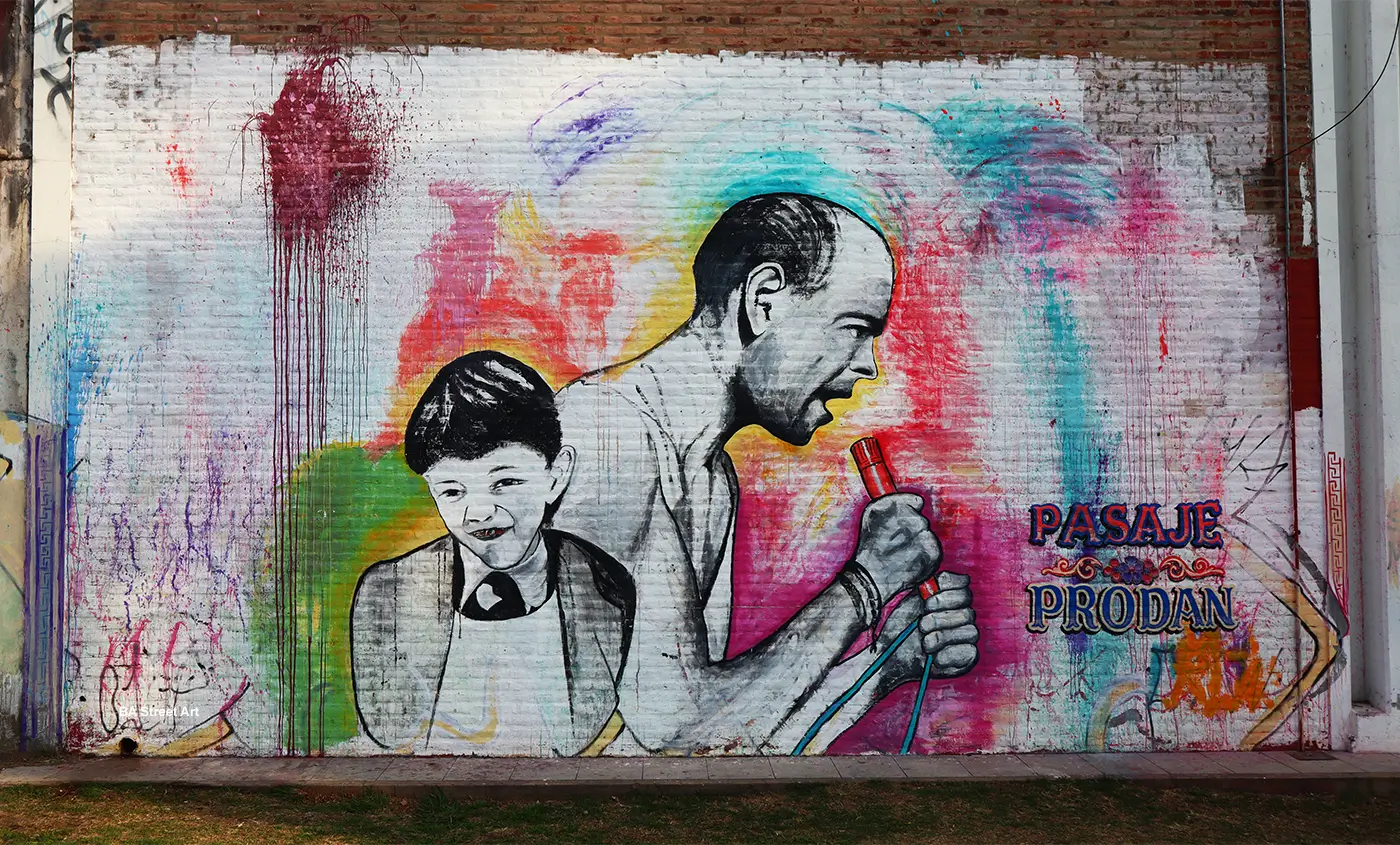
Mural of Prodan as a singer & a boy painted by Hernán Soto & Pablo Falbi (photo © BA Street Art)
After Prodan’s death, two bands were formed from former Sumo members: Divididos and Las Pelotas. These names were taken from Luca’s comments about Sumo’s dissolution, when he said “Divididos, las pelotas”, which translates as “separated, bollocks!”.
All photos © Buenos Aires Street Art

